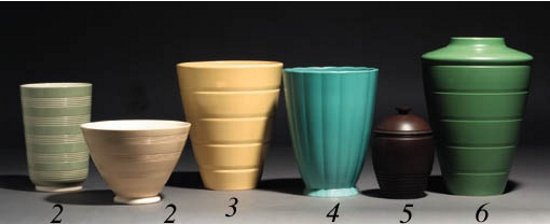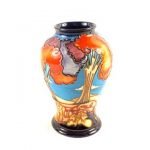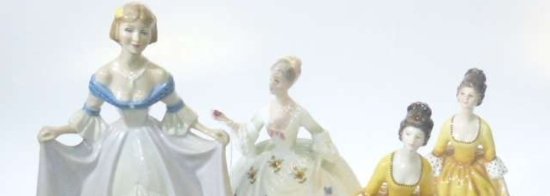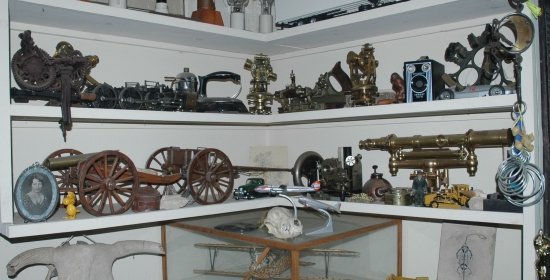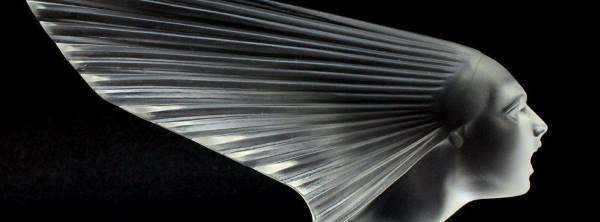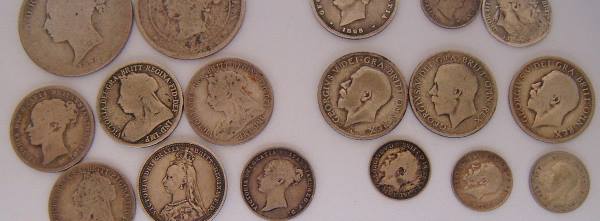The interwar period in the British pottery industry was fraught with closures, shortages of skilled workers and a lack of pioneering spirit in design matters. Fortunately, several designers created ground breaking patterns and shapes that not only set new standards but also influenced a whole new generation of customers. One of these designers was Keith Murray who, throughout the thirties, produced some of the most outstanding and innovative pottery for Josiah Wedgwood and Sons Ltd. His sculptural forms, decorated with subtle matt glazes, were unlike anything seen on the market before and were very popular with discerning customers who wanted original and modern contemporary pottery. The success of his work helped Wedgwood to regain their position at the leading edge of contemporary industrial design and at the same time influenced other manufacturers and designers.
Keith Murray was born in New Zealand in 1892, but moved with his family to Britain when he was young. Following his formal education he studied at college soon enlisting to fight in the First World War. Returning to London in 1919 he trained as an architect at the Architectural Association School in London. Unfortunately, his ambition to be an architect was temporarily postponed due to the severe economic problems that faced the world. Meanwhile, he looked at modern glass that he found too ornate. This inspired him to create designs of his own that he felt reflected contemporary taste. In 1932 Murray was contracted by the glass manufacturer Stevens & Williams Ltd. Throughout the thirties he produced a series of cocktail sets, vases, sherry sets and decanters. The simple forms, usually undecorated, were stylish and popular.
However, Murray established his reputation at Josiah Wedgwood and Sons Ltd., who had a long tradition for commissioning artists skilled in areas other than ceramics to design for them. Having rationalised their product range and discontinued many of the more ornate patterns that were not selling on the important North American market they needed new talented designers to counter the economic slump caused by the Wall Street Crash in 1929. They decided to produce a range of modern and practical wares that were less expensive and turned to Murray to assist in the development of the Annular shape, designed by Tom Wedgwood and John Goodwin in 1932. Collectors should note that Murray designed two vegetable dishes and was not involved in any surface patterns such as the silver lustre laurel border that is often labeled as being his. Furthermore the Annular range, decorated with a matt green glaze, was also not by him.
Following this Murray was contracted, on a part time basis, to design modern shapes. He studied the various production processes at the factory enabling him to gain a thorough appreciation for the skills of throwing and turning, assisted by Norman Wilson. Murray’s pieces were made by the traditional method of wheel throwing and finished on the lathe to give them sharpness. The decision to make his wares by hand was partly economic. Firstly, with the financial difficulties faced by the company, the development of costly moulds was ruled out and secondly this form of manufacture would secure the jobs of the skilled men. A full range of his work was ready by 1933.
The first examples included the tall shoulder vase (shape 3805), a bowl (shape 3753) and a vase (shape 3801). They featured horizontal banding or incised bands that made them look as though they had been machine made. They were finished with distinctive matt glazes such as straw, green, turquoise and cream. A facsimile signature was incorporated into the company backstamp that read, ‘Keith Murray, WEDGWOOD, MADE IN ENGLAND.’ His shapes were entered into the standard Wedgwood shape book. Items such as lamp bases, fluted vases, and bookends were added in about 1935-36. His earlier items are much sought after by collectors today. In particular the 3805 vase is popular and one can expect to pay in the region of £200-300 for an example in good condition.
Alongside these more expensive items he also produced a range of beer jugs and mugs. Collectors should be aware that some of these shapes were used by other Wedgwood designers, such as Victor Skellern and Millicent Taplin, for other patterns that were markedly different from his work. For instance, his shapes, featuring relief decoration by Arnold Machin, were used to mark the Coronation of King Edward VIII.
In about 1936, a range of affordable slip cast shapes were introduced and included table lamps and smaller pieces such as an ink stand, ashtray, cocktail cups and powder bowl. In particular the slip cast decorated beer mugs retailed at half the price of earlier hand thrown tankards exhibited at the Royal Academy of Arts in 1935. Some of these wares combined the cream coloured earthenware body with a blue, green, yellow or brown glaze that were turned on the lathe to reveal the cream body underneath. These more classical styled shapes are not as sought after by current collectors.
With a wide range of pottery in production Murray started to experiment with bodies such as Black Basalt, perfected by Josiah Wedgwood I in the late 1760s, for a series of bowls, vases and beakers (see plate 6). Murray also used experimental bodies such as Bronze and Copper Basalt for items including a tobacco jar that retailed at 16/3. He also designed a coffee set either decorated with a moonstone glaze or produced in Black Basalt, although only the coffee pot, milk jug and sugar bowl were produced on the latter body . For a short period Murray designed several surface patterns for both table and dinnerware. This lesser-known area of his work included patterns such as Iris, Silver Willow and Pimpernel introduced in 1934. They did not prove successful and may have been discontinued soon afterwards, which may explain why they are seldom seen on today’s collecting market.
Murray continued to work in both glass and ceramics, achieving an outstanding reputation and high status among the design world. In 1936 he was one of the first ten designers to be appointed to the Faculty of Royal Designers for Industry by the Royal Society of Arts. By the late thirties he was moving away from pottery design into his architectural practice and he went into partnership with Charles White. Their first commission was to design the new Wedgwood factory at Barlaston, Stoke-on-Trent.
His later work included a tall footed vase (shape 4325) and a hand thrown vase (426) that were marked with a new backstamp, probably introduced in about 1940, featuring his initials KM within the standard Wedgwood mark that read ‘Wedgwood of Etruria and Barlaston (see plate 8). With the advent of the Second World War Murray returned to the Royal Air Force from 1939 to 1941. Production of his work continued throughout the war with several examples being shown at the ‘Britain Can Make It’ exhibition in London in 1946. Shortly afterwards Wedgwood asked Murray to design a practical tableware range for the home market and for export. The resulting range was called the Common Wealth service but Murray only designed the teapot. Despite archive photographs, examples have not been found. Eventually Murray retired from the pottery industry to concentrate on his architectural business; Ramsey, Murray and White architectural practice were responsible for a number of important commissions.
Interest in his work has grown steadily over the last ten years. In 1998 Christies, South Kensington held a special sale of 26 lots. The highest price of £1,600 was achieved for a Black basalt vase (shape 3816). Several other lots went for £950-£1000. Since then his work has gained an international appeal with both his work in glass and ceramics reaching new heights. Dr Greg Stevenson, a collector of his work and author of Art Deco Ceramics (Shire) commented that, “now is the time to buy. Prices have fallen in the last twelve months, but are due to rise again ready for the publication of a book on Murray in 2003. Collectors can start with a beer mug at around £45-65, with most vases ranging between £200 and £500.”
Andrew Casey is the author of 20th Century Ceramic Designers, published by Antiques Collectors’ Club, priced £39.50, ISBN 1-85149-352-2.

